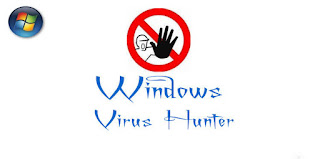Wednesday, 1 August 2012
How to Remove Windows Virus Hunter
How to remove Windows virus hunter
Windows Virus Hunter is a rogue malicious antivirus program which displays fake security alerts, reporting that malware has been detected on your computer. The rogue program detects false infections and displays numerous fake security warnings, alerts using pop-ups.
Windows Virus Hunter disables the Windows system utilities, including Task Manager and Windows Registry and prevents you from running certain programs like antivirus.
The browser also redirects you to fake websites when you try to visit security websites and also slows down your computer.
Follow the given steps to remove the Windows Virus Hunter.
- Step1
Restart your computer and during the restart process, press F8 key on your
keyboard repeatedly. Select Safe Mode with Networking, and then press ENTER.
- Step2
Windows Virus Hunter adds a proxy to your Internet connection, so we need to
its settings. It's because of this proxy, your system display various errors when you
try to access the Internet. To do this, open Internet explorer>click Tools >select
Internet Options. Then select the "Connections" tab.
- Step3
In the "Connections" tab, click LAN settings. Uncheck if the "Use a proxy server
for your LAN" box is checked. Click OK.
- Step4
Download any latest legitimate anti-spyware software to fully remove Windows
Virus Hunter from your computer. This software scans your computer and
removes the virus.
- Step5
After removing Windows Virus Hunter, you will need to reset your Hosts file.
It is because this virus modifies your Hosts files due to which you encounter
browser redirect problems. To reset the Hosts file, rename the old one. Locate the
Hosts file, right-click it and click Rename. Rename it to Hosts.old. Now create a
new Hosts file in the same location by right-clicking anywhere on the blank space
and selecting New> Text Document.
- Step6
A new Notepad file will open up. Make sure that the extension of this file is not .txt.
Now copy and paste the text data from Hosts.old to this file. Save the changes and
close the file.
Source http://tech-zone-tabloid.blogspot.com/
123
Subscribe to:
Post Comments (Atom)


No comments:
Post a Comment